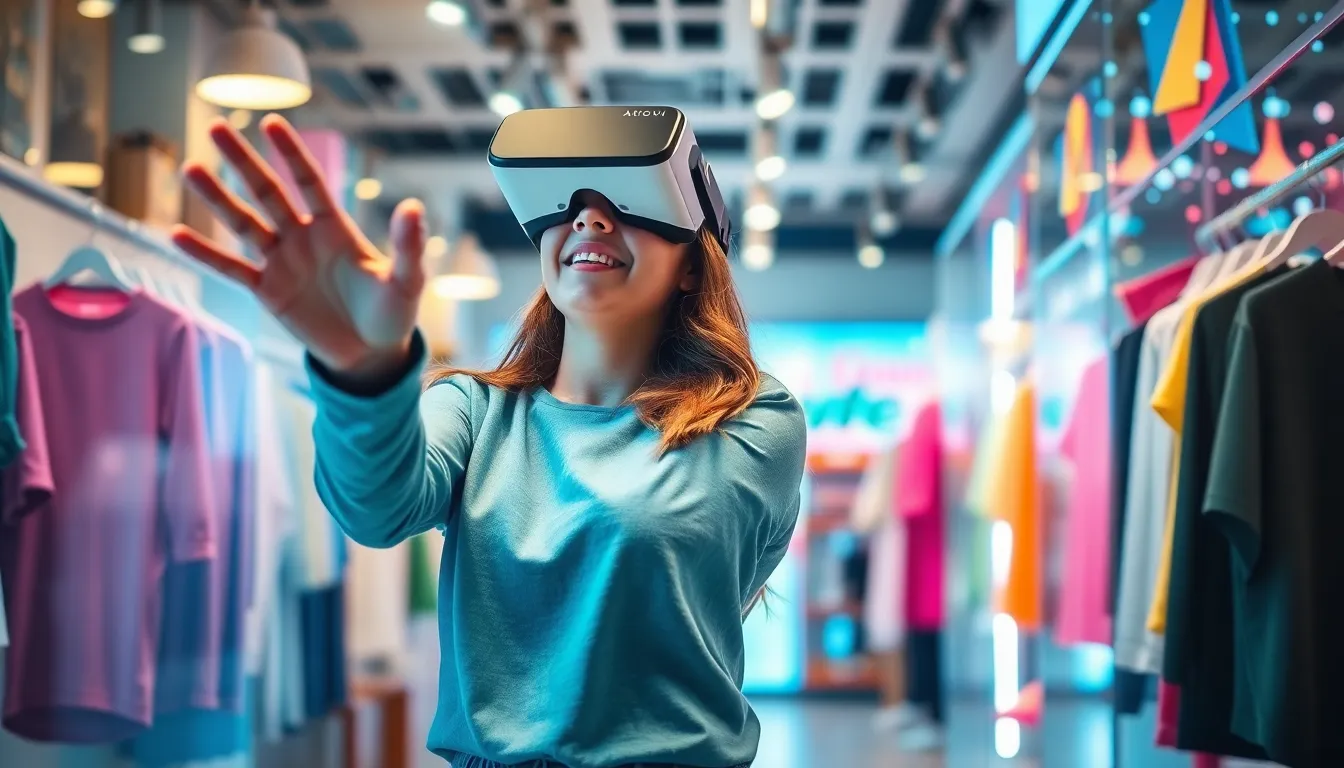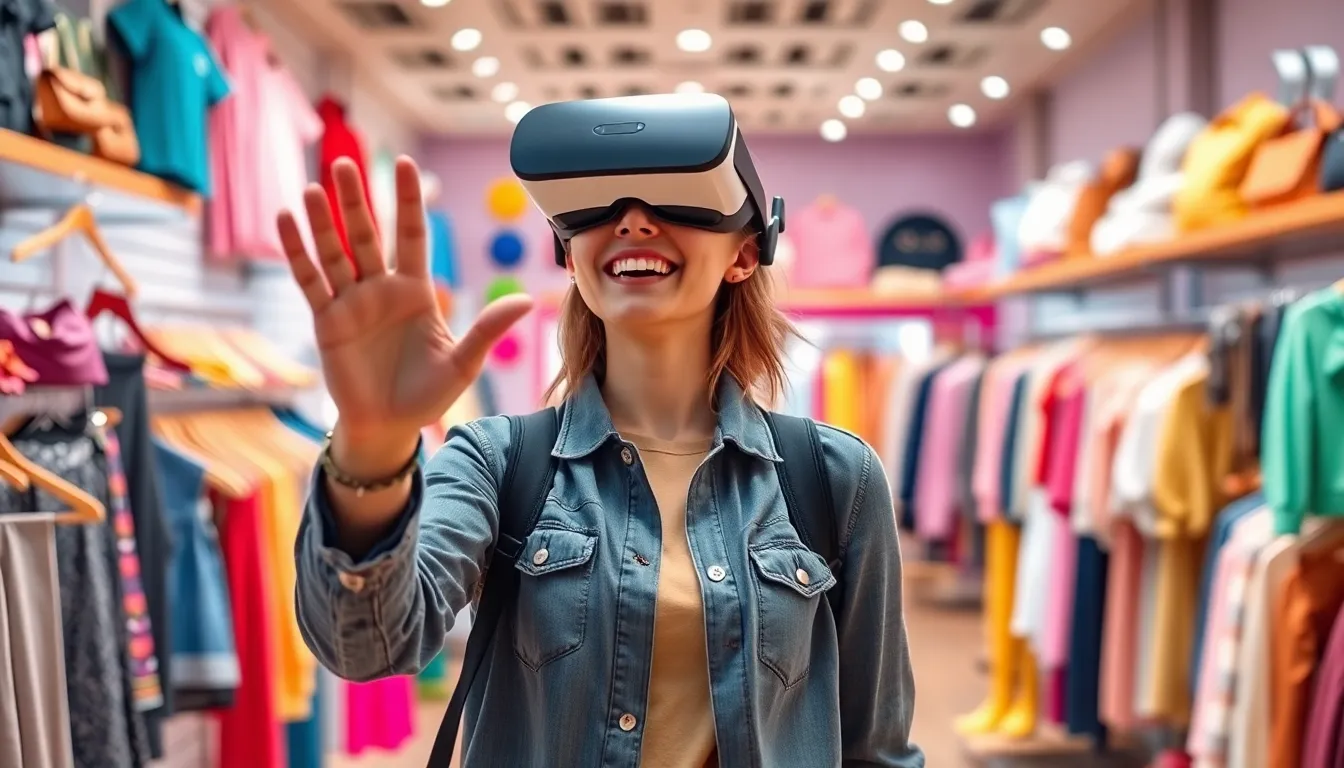Virtual reality shop simulations are transforming the way consumers experience retail. Imagine stepping into a store where the aisles are endless and the products are just a headset away. No more crowded malls or long checkout lines—just pure shopping bliss from the comfort of your couch.
Table of Contents
ToggleOverview of VR Shop Simulations
Virtual reality shop simulations transform how consumers interact with retail environments. These immersive experiences allow users to explore stores in a 3D setting, creating an engaging shopping atmosphere. In this space, customers can browse products, try on clothing, and examine goods from multiple angles.
Retailers integrate VR technology into their business models to enhance customer engagement. This approach reduces the limitations of physical store layouts, adapting to consumer preferences for convenience and accessibility. Key benefits include a reduction in shopping time and an increase in product knowledge, resulting from virtual displays that provide detailed descriptions and user reviews.
Moreover, VR shop simulations encourage impulse buying by creating enticing virtual displays. Retailers can utilize gamification techniques to reward customers for exploring products, leading to increased sales. Studies show that up to 70% of consumers reported feeling more connected to brands when engaging with VR content.
Analytics within these simulations offer valuable insights for retailers. They track user behavior and preferences, allowing businesses to tailor offerings based on consumer interactions. Data-driven decisions optimize product placements and promotions, enhancing overall customer experience.
Integration of social features in VR shop simulations enables shared shopping experiences. Friends and family can join virtual environments, offering recommendations and opinions in real-time. This social interaction enhances the retail experience, enabling consumers to make informed choices.
The evolution of VR technology continues to shape retail strategies. VR shop simulations not only improve customer satisfaction but also drive brand loyalty through interactive engagement.
Benefits of VR Shop Simulations

VR shop simulations offer numerous advantages for both consumers and retailers. These benefits enhance the overall retail experience and engagement.
Enhanced Customer Experience
With VR shop simulations, customers enjoy a more personalized shopping journey. Immersive technology enables users to interact with products in a lifelike setting. Shoppers can visualize how clothing fits or examine electronics from multiple angles. Such experiences eliminate uncertainties commonly faced in traditional shopping. By creating an enjoyable and interactive environment, VR simulations also reduce stress associated with crowded stores. All these factors contribute to a holistic customer journey that feels tailored and intuitive. Retailers leveraging VR technology can also gather valuable insights into customer preferences, enhancing future interactions.
Increased Engagement
Incorporating VR shop simulations significantly boosts customer engagement levels. Users tend to spend more time exploring products, which encourages deeper connections with brands. Virtual environments often include gamification elements, such as rewards for exploration or challenges that enhance interaction. These engaging features stimulate impulse buying, driving higher sales conversions. Social sharing opportunities allow friends and family to join the experience, leading to a sense of community during shopping. Analytics also play a critical role by tracking user behavior, enabling retailers to refine their strategies. Overall, the interactive nature of VR simulations transforms mundane shopping into an exciting adventure.
Technology Behind VR Shop Simulations
VR shop simulations rely on advanced technological frameworks that merge hardware and software expertise. These simulations create an immersive and engaging shopping experience.
Hardware Requirements
High-quality VR shop simulations require specific hardware components. VR headsets such as the Oculus Rift, HTC Vive, or PlayStation VR provide immersive visual experiences. Motion sensors and tracking systems enhance user interaction within virtual environments. Powerful computers or gaming consoles also support high-performance graphics and processing speed. Additionally, accessories like handheld controllers and haptic feedback devices enrich user immersion by enabling intuitive product interaction. Together, these hardware elements create a seamless and captivating shopping experience.
Software Development
Developing software for VR shop simulations demands expertise in 3D modeling and simulation. Programming languages like C# or C++ facilitate creating interactive elements and user interfaces. Game engines, such as Unity or Unreal Engine, simplify the development of visually stunning environments. VR-specific frameworks optimize performance and ensure compatibility across devices. User experience design plays a crucial role in crafting interfaces that are intuitive and user-friendly. Regular updates and enhancements to software ensure ongoing improvements and adaptations to consumer preferences. All these factors contribute to a dynamic and future-ready retail environment.
Use Cases of VR Shop Simulations
VR shop simulations find extensive application across several industries, enhancing the shopping experience and engagement levels.
Retail Industry
In retail, VR shop simulations allow consumers to browse products in immersive 3D environments. Customers often experience realistic interactions with items, such as trying on clothing or visualizing furniture in their homes. Retailers benefit from immersive technology, as it captivates consumers and encourages longer shopping sessions. Analytics gathered from these simulations provide insights into shopping behavior, enabling retailers to optimize product placements and enhance inventory management. Gamification elements within the simulations promote exploration and can lead to impulse purchases. Creating personalized experiences boosts customer satisfaction and fosters brand loyalty, bridging the gap between digital and physical shopping.
Real Estate Virtual Tours
Real estate professionals utilize VR simulations for virtual property tours. Clients can explore homes and commercial spaces without physical visits, saving time and effort. This technology facilitates presenting properties in engaging formats, allowing potential buyers to visualize spaces more accurately. Agents often observe an increase in interest from clients because immersive tours provide deeper insights than traditional photos or videos. Virtual tours enable the showcasing of hard-to-reach properties, expanding market reach. Enhanced interactivity allows clients to navigate at their own pace, ensuring they gather essential information about properties. Thus, VR shop simulations redefine the real estate showing process and enhance client engagement.
Challenges Facing VR Shop Simulations
VR shop simulations face multiple challenges that impact their effectiveness and user experience. Adapting to these challenges is essential for their success in retail and other industries.
Technical Limitations
Technical limitations hinder the growth of VR shop simulations. High-performance hardware is necessary for immersive experiences, yet not everyone has access to advanced VR headsets or powerful computers. Compatibility issues can arise, affecting seamless integration with existing retail systems. Additionally, creating detailed 3D environments requires substantial development resources, diverting budgets from other important areas. Regular software updates also pose challenges, as developing new features and fixing bugs demand continuous attention and investment.
User Adoption Issues
User adoption issues create barriers to the widespread acceptance of VR shop simulations. While some consumers embrace new technology, others remain hesitant due to perceived complexity and unfamiliarity. Many individuals lack experience with VR, leading to skepticism about its practicality for shopping. Concerns over privacy and data security can further deter potential users. Lastly, the initial cost of hardware can discourage consumers from trying out VR experiences, causing retail companies to miss out on engaging a wider audience.
VR shop simulations are redefining the retail landscape by creating immersive and engaging shopping experiences. As technology continues to evolve retailers have the opportunity to leverage these simulations to enhance customer interactions and drive sales. The ability to browse products in a lifelike setting not only reduces shopping stress but also fosters deeper connections between consumers and brands.
While challenges remain in terms of technology and user adoption overcoming these hurdles will unlock the full potential of VR in retail. As more retailers embrace this innovative approach the future of shopping promises to be more interactive and personalized than ever before. The integration of VR technology is not just a trend; it’s a transformative shift that will shape how consumers engage with retail for years to come.




